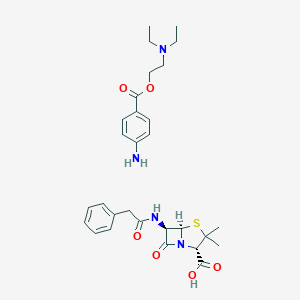Bejel, Pinta, Syphilis, Yaws
Adult: For early stage: 600 mg once daily via deep injection for 10 days. For late stage: 600 mg once daily via deep injection for 17 days.
Intramuscular
Neurosyphilis
Adult: In combination with probenecid: 1.8-2.4 g once daily via deep injection for 17 days.
Intramuscular
Congenital syphilis
Child: For early stage and patient with abnormal CSF: ≤2 years 50 mg/kg once daily via deep injection for 10 days.
Intramuscular
Fusospirochetosis (Vincent's infection) of the oropharynx, Invasive Group A beta-hemolytic streptococcal disease, Pneumococcal pneumonia, Staphylococcal infections
Adult: For moderately severe to severe cases: 1.5 g daily via deep injection for 2-5 days. The 4th and 5th doses are dependent on the severity of infection.
Intramuscular
Pneumococcal pneumonia
Child: 50 mg/kg once daily via deep injection for 10 days.
Intramuscular
Uncomplicated gonorrhoea
Adult: 1 g once daily via deep injection for 7-14 days. Alternatively, up to 4.8 g as a single dose in combination with probenecid.
Intramuscular
Diphtheria
Adult: As adjunctive therapy with antitoxin: 300-600 mg once daily via deep injection. Carrier state: 300 mg once daily for 10 days.
Child: Carrier state: 300 mg once daily via deep injection for 10 days.
Child: Carrier state: 300 mg once daily via deep injection for 10 days.
Intramuscular
Treatment and postexposure prophylaxis of inhalation anthrax
Adult: 1.2 g via deep injection every 12 hours for 60 days.
Child: 25 mg/kg every 12 hours for 60 days via deep injection. Max: 1.2 g/dose.
Child: 25 mg/kg every 12 hours for 60 days via deep injection. Max: 1.2 g/dose.
Intramuscular
Cutaneous anthrax
Adult: 0.6-1 g once daily via deep injection.




 Sign Out
Sign Out




